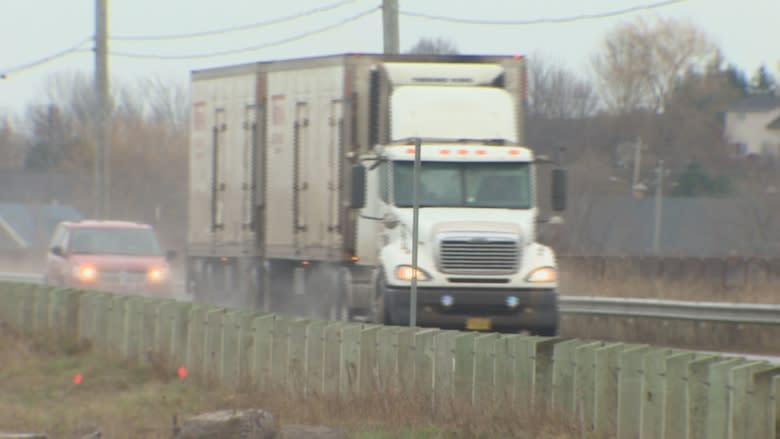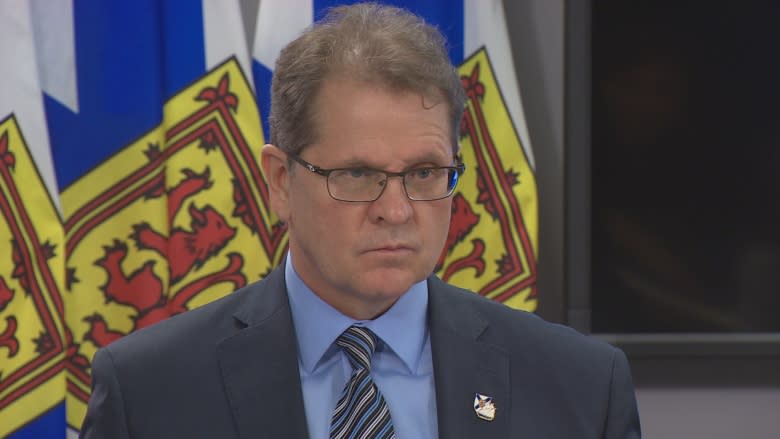Stretches along Highway 104 deemed financially feasible for twinning
A new report commissioned by the Transportation Department says it's financially feasible to twin two portions of highway in northern Nova Scotia with the help of tolls.
Consulting firm CBCL Ltd. previously said the toll fees to upgrade the two sections of Highway 104 between Sutherland's River and Antigonish, and Taylors Road to Auld's Cove would be too steep.
However, the firm says it has since received additional information on traffic volume and more refined cost estimates, and the projects now fall within what drivers have indicated they're willing to pay.
The details were released to the media Monday and will be presented to communities around Nova Scotia in the coming six weeks as part of a series of public meetings. The first meeting is set for Tuesday in New Glasgow.
Much of the information released is the same as was released last summer.
'We knew the numbers were there'
A public survey last May found the median toll rate people were willing to pay was six cents per kilometre. The funding formula to pay the roadwork off over 30 years would see 50 per cent coming from tolls and the province and Ottawa splitting the other half.
The report said drivers would pay between $2.27 and $3.78 in toll fees for the 37.8-kilometres stretch from Sutherland's River to Antigonish. It would cost drivers between $2.37 and $3.95 for the 39.5-kilometre stretch from Taylors Road to Auld's Cove.
Overall, the projects are expected to cost $285 million and $279 million, respectively.
One of the leading advocates to twin the Highway 104 portions, Barneys River volunteer fire chief Joe MacDonald, called the update fantastic news.
"We knew the numbers were there," he said.
"Every day travelling on the highway, you're seeing more and more traffic on the highway and more and more transport trucks moving freight, which is inevitable because of the declining of railway."
Projects influenced by available funding
The presentation to the public will emphasize what Transportation Minister Geoff MacLellan has said since the twinning study was announced: if people want the work done sooner, they must be willing to pay.
The province spends almost $400 million a year on its highways, about half of which is for construction.
By contrast, the work on the 304 kilometres of highway being considered in the twinning study would cost approximately $2.2 billion.
The province's executive director of infrastructure programs, Bruce Fitzner, said the amount of time it takes to do a new project is significantly influenced by the amount of funding available in a given year.
He pointed to a recently completed twinning project near Antigonish, where it took 20 years to twin 16 kilometres, as an example.
By contrast, it took about two years to complete the 45-kilometre Cobequid Pass.
Fitzner estimated it would take about 10 years to complete all the roads identified in the study if the government approved everything, although it would also require additional approval from the Treasury Board on account of the cost.
Fitzner expected his department would have final data and public feedback complete sometime this year to present to the provincial government to make a decision on which projects, if any, go ahead.



